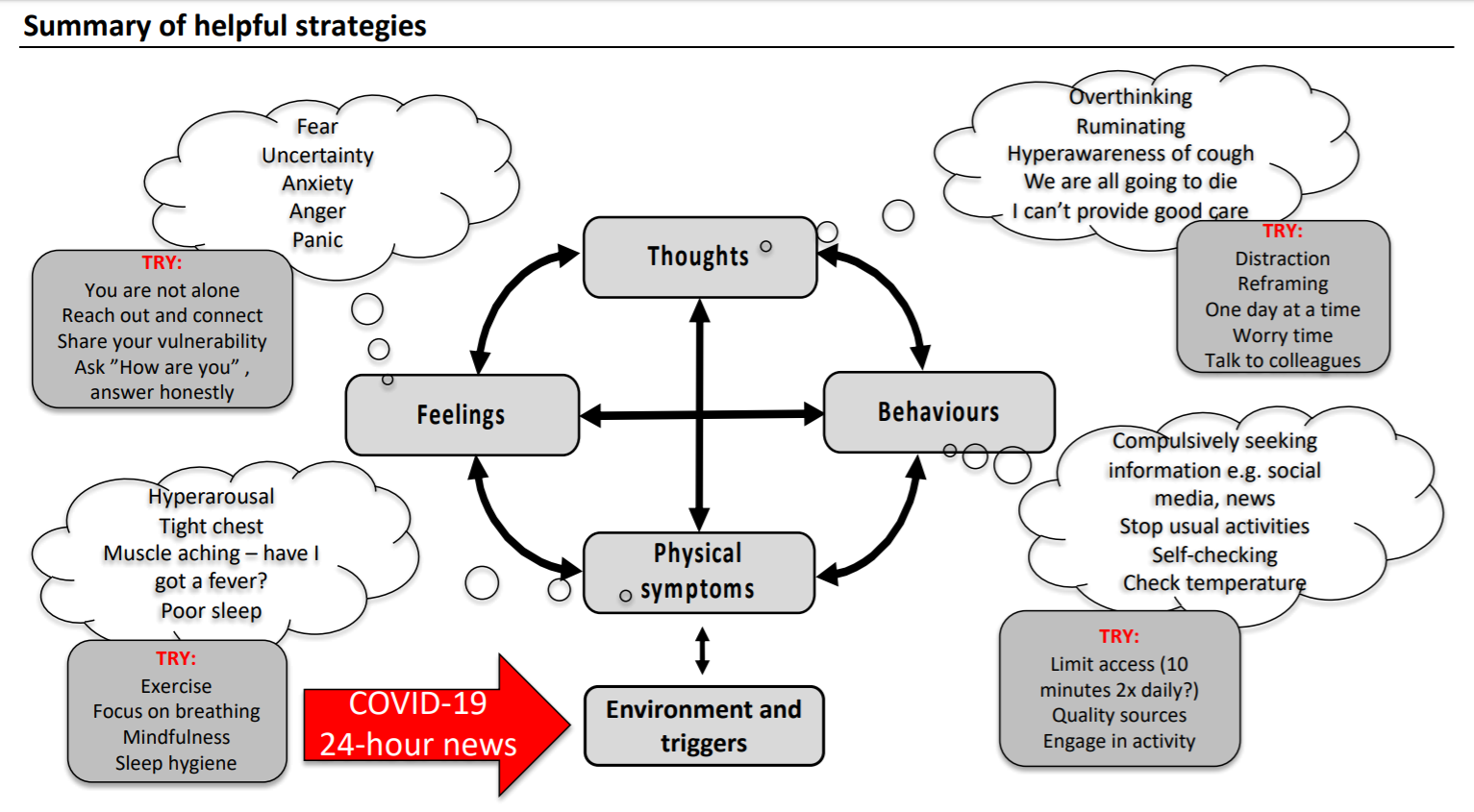An emotional survival guide for COVID-19

An emotional and psychological survival guide
Red Whale has recently published online resources to support healthcare professionals during the pandemic.
Their recent post on "an emotional and psychological survival guide" features practical tips on how to take care of your mental health, based on cognitive-behavioural therapies (CBT)
Try it yourself: Look at the image above, where do you find yourself in the cycle? Are you experiencing any of the "feelings", "thoughts", "behaviours" or "physical symptoms"?
Part of dealing with the pressures of living and working in this difficult time is understanding our emotions, state and triggers.
Manage your "Worry-time"
From Red Whale
Steps for ‘worry time’
• Choose a worry time: plan a regular period of 15–30 minutes for worrying each day, ideally at the same time and in the same place. Try to avoid doing this just before bedtime.
• Notice when a worry pops into your mind: if you notice that you have started worrying at any time outside the planned worry time, tell yourself: It’s OK to have this worry, but I’m going to put off thinking about it until my worry time. I will have time to think about it later. I will be able to deal with this problem later.
• Note down your worries: you might find it helpful to carry a notebook to quickly write down the worry thought, and then close the book until worry time. Don’t be concerned if the same thought pops back again very quickly. It is very common to experience repeated worry thoughts. Just repeat the same process: accept the thought, write it down and then postpone it for later.
• Focus on your daily life: after noting down your worry, close the book, focus your attention back onto the present moment and concentrate on whatever activity you are carrying out. This will help to let go of the worry until worry time arrives later on.
• Review your worries during worry time: when it comes to your planned worry time, you can look through your list of worries. Cross anything off the list that is no longer a worry for you. Allow yourself to worry for up to 30 minutes. Try to also focus on some problem-solving ideas by asking yourself: Is there anything I can do to help this situation?
• Move on to another activity: don’t spend any longer than planned during worry time. Afterwards, try to move quickly onto another activity that is likely to take your mind away from your worries and lift your mood, such as exercise, listening to music or calling a friend.
Loading Author...
Sign in or Register to comment